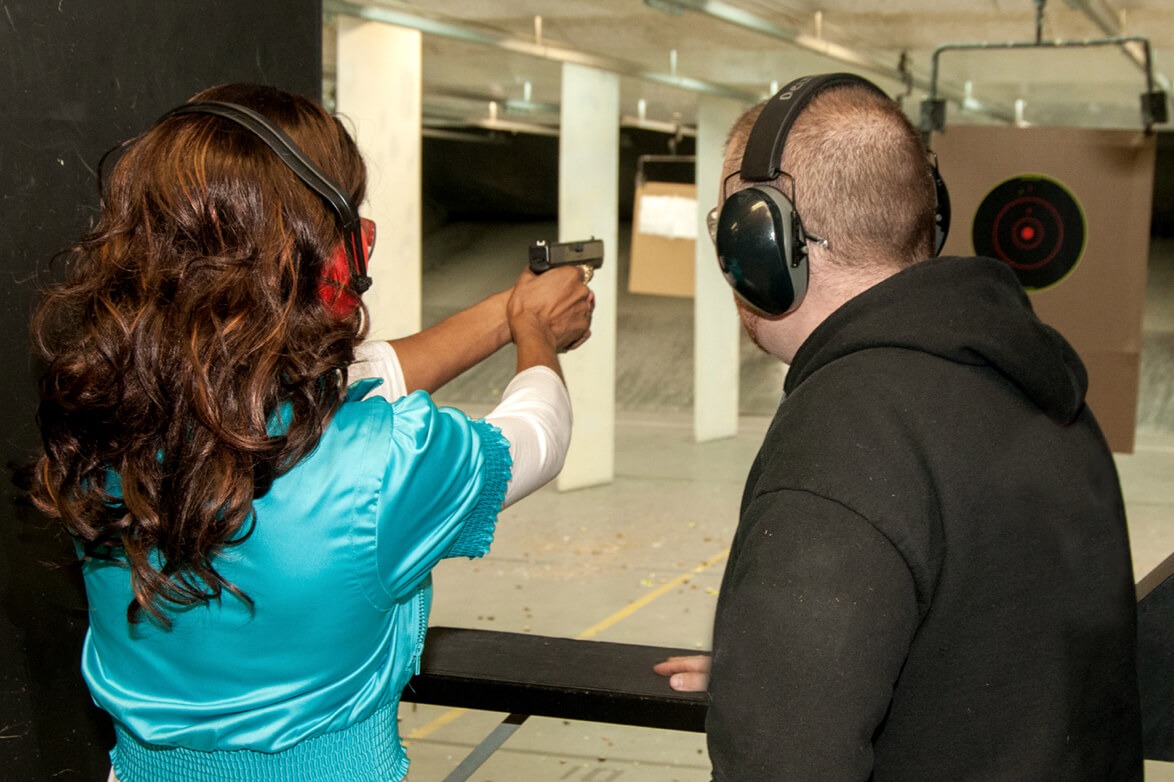 Back to News
Back to News
Image Source: (Courtesy of Brian McCombie)
August 16, 2021
Save the Earth. Hunt Hogs.
Celebrating National Shooting Sports Month® doesn’t have to be just a range activity. Hunters can get into the game too and while they’re at it, lend a helping hand to conservation and fight climate change.
That’s right. Hunters go can green and not just wear green by hunting hogs.
At least 12 states allow year-round hog hunting. They stretch coast-to-coast, from California to Virginia and Texas to Wisconsin. Hunters can take advantage of the dog days of summer to put some pork in the freezer. At the same time, hunters can be doing a favor when it comes to reducing carbon emissions and growing the next generations of hunters.
Ecological Menace
Feral hogs have long been known to be a scourge on wildlife. They are a non-native species introduced into North America as a food source. Domesticated pigs were brought to North America in the 1500s and released into the wild. They’ve been reported in 45 states and were largely contained to the Southern United States through most of the last century. That was until the population exploded. It was referred to as a “pig bomb.” There’s even a Netflix documentary on the phenomenon.
Feral hogs are environmental assassins. They’re responsible for $1.5 billion worth of crop damage annually, according to the U.S. Department of Agriculture. Wild hogs devastate farmers’ fields by trampling or eating crops and rooting and eating seeds before they sprout. They will eat nearly anything they come across, making them particularly harmful to native wildlife. They raid nests and devour eggs of birds and even alligators, even eating small mammals, reptiles, amphibians and insects. Their rooting and wallowing affects fish, with muddy run-offs polluting streams, ponds and lakes. They’re also known carriers of swine brucellosis, pseudorabies and tularemia among other diseases.
A more recent study shows that feral hogs are also responsible for releasing more carbon emissions than 1 million cars. Carbon trapped in the soil is released into the atmosphere by the hogs’ rooting activity.
Hog Medicine: Hunting
The good news is states are making it easier than ever to put a dent in the hog populations. Texas, ground central for the swine overrun, eliminated license requirements in 2019 to hunt hogs on private property with landowner consent. That means anyone, resident or nonresident, needs only to secure landowner permission to bring home the bacon.
Alabama opened up night hunting for hogs and coyotes and so far has sold over 500 licenses. It’s just $15 for residents and $51 for nonresident hunters. That makes it a bargain for out-of-staters. A license to hunt all game species in Alabama runs nearly $330 for non-residents. The recently passed law also allows hunters to use devices that were previously banned, including night vision, thermal optics and lights.
Alabama’s not the only state. Hog hunting at night is permitted in Arkansas, California, Colorado, Florida, Georgia, Indiana, Iowa, Kansas, Louisiana, Michigan, Mississippi, North Carolina, Ohio, Oklahoma, South Carolina, Tennessee, Texas, Virginia and Wisconsin. Hunters should be sure to check state-specific regulations as many states limit it to private property or with notification to authorities for depredation purposes.
Texas is taking hog hunting to new heights. Helicopter hog hunts have become a bucket-list excursion for hunters who want to try their hand at aerial marksmanship. If helicopters are a little intimidating, Texas allows for hot air balloon hog hunting.
+ONE®
Guam is using hog hunting as a tool to reduce the invasive pigs and grow new hunters. The South Pacific U.S. territory is hosting the annual Field to Fork – Babui, or wild pig hunt on Aug. 21. It is an island-wide effort that uses the U.S. Fish and Wildlife Service Wildlife and Sportfish Restoration Grant Program, funded in part by the Pittman-Robertson excise taxes paid by firearm and ammunition manufacturers. The hunt will feed families, foster safe, responsible and ethical hunter development and reduce our nuisance feral pig population.
Hog hunting is a great way to introduce new hunters to big game hunting. They can be hunted by spot-and-stalk, stands or with dogs. Just about any deer gun will work, but hog hunting is also a favorite for those who want to put their Modern Sporting Rifle (MSR) to work. There are entire online communities dedicated to hunting hog with AR-15-style rifles.
Chefs are dedicating books to teaching hunters that wild hogs make for good table fare. Eater Austin reported on one Texas chef and restaurant owner who made it his mission to educate the masses on the pork bonanza available to them. “Dai Due owner and chef Jesse Griffiths’s longtime mission is to convince people to eat wild hogs. Enter The Hog Book, a definitive guide to hunting, preparing, and cooking the wild animal, which he is self-publishing this August.”
National Shooting Sports Month, created by NSSF® to recruit, retain and reinvigorate recreational shooters and hunters, is the perfect time not just to get to the range. That’s the point of NSSF’s +ONE program to grow new recreational shooters and hunters. There’s game in the woods and it’s open season. Tipping over a feral hog not only helps pack the freezer, it’s good for the environment too.
You may also be interested in:
Categories: Featured, Hunting, Top Stories









